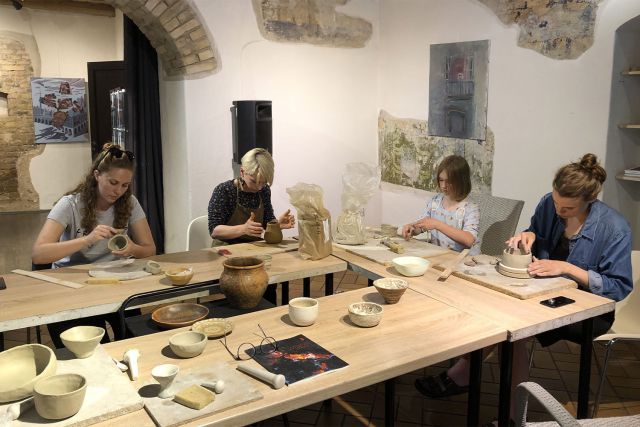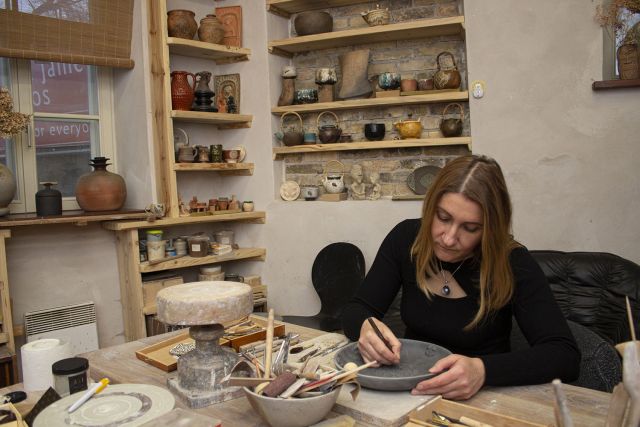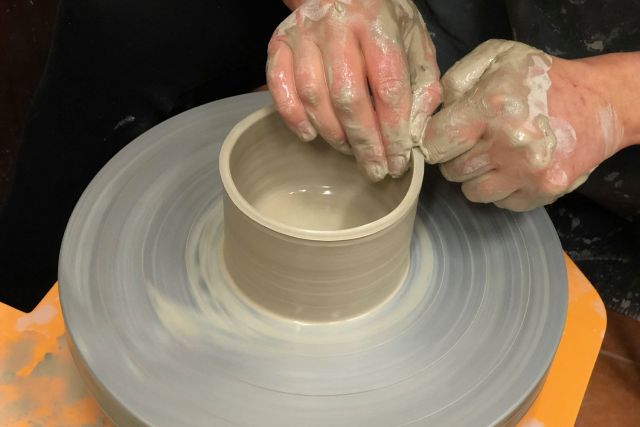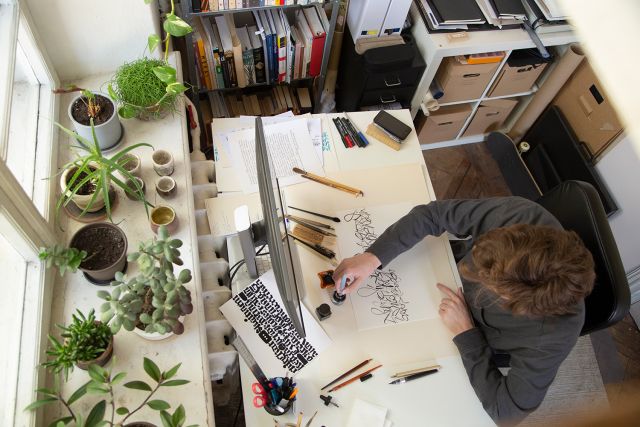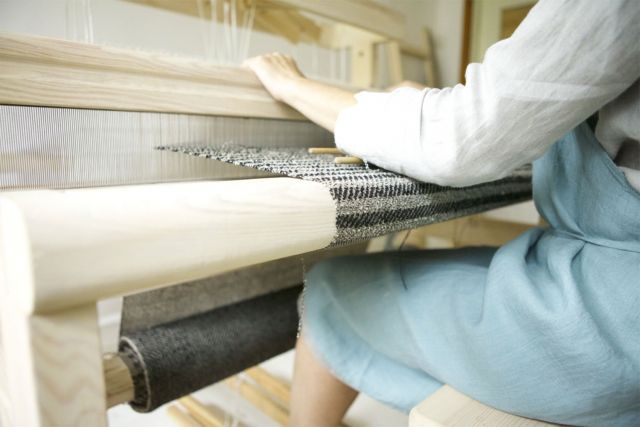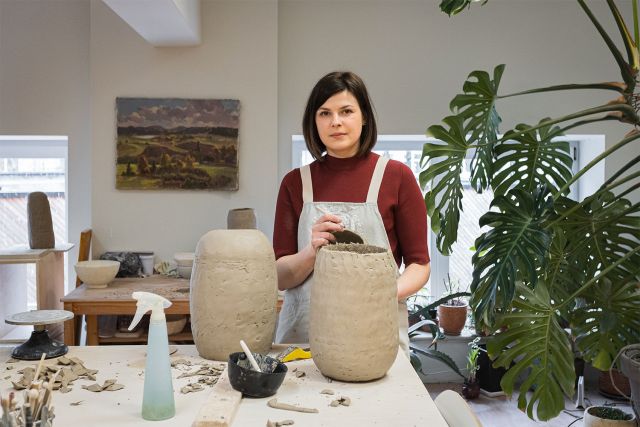This exceptionally durable ceramic vessel "Japanese" is chameleon-like. The glazing inside contrasts with the rough surfacing of the stoneware on the outside. It is warm to the touch. The size makes it useful for delicate small items but also finds uses in other settings like the kitchen.
Height 18 cm
Diameter 13 cm
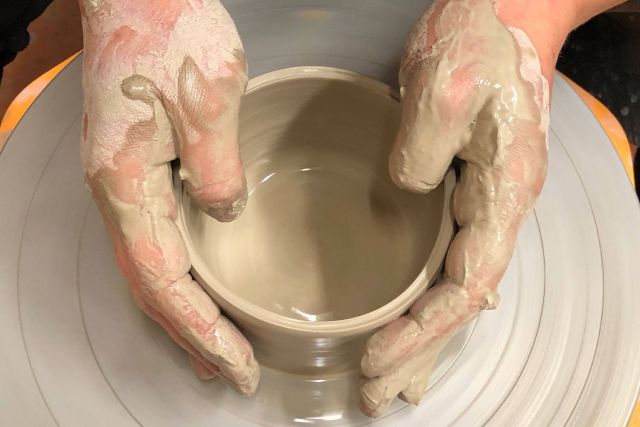
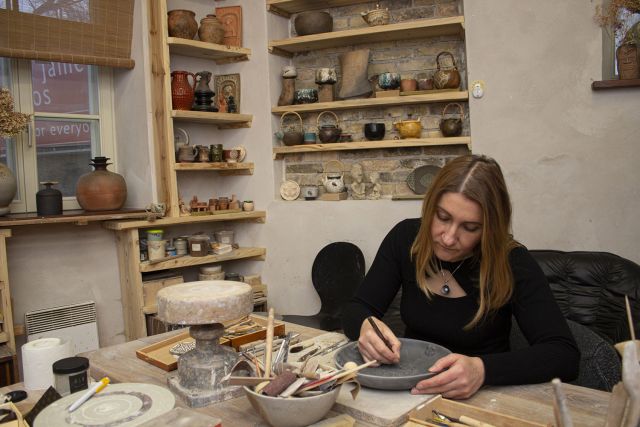
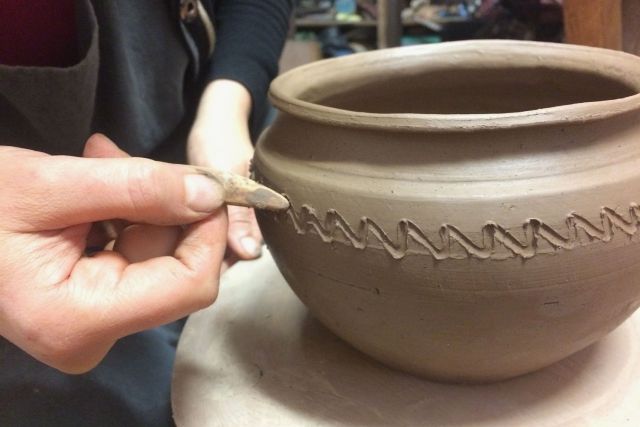
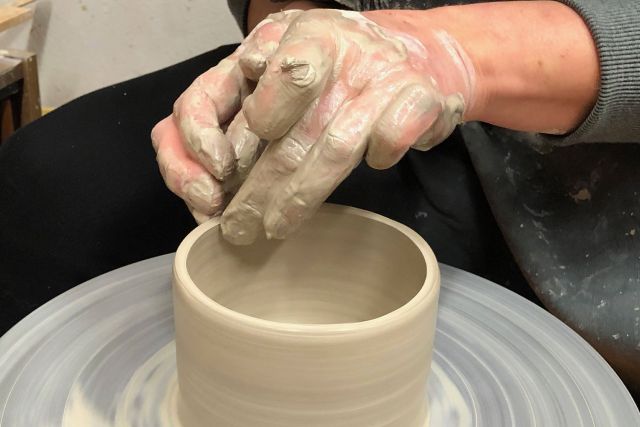
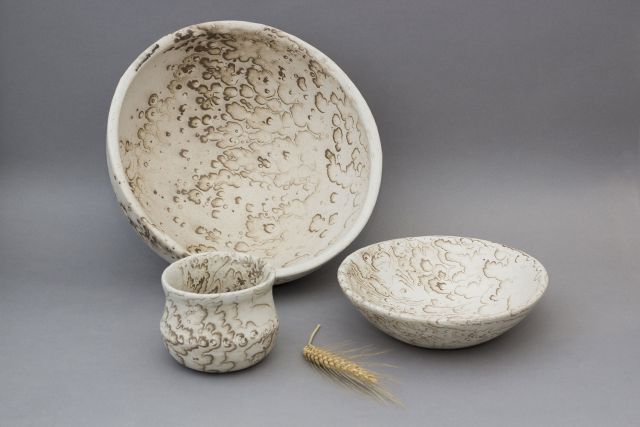
Elena Aleksejeva
- Ceramicist
- Vilnius, Lithuania
- Master Artisan
- Recommended by Vilnius Academy of Arts
By appointment only
+370 65999041
Learning from history
- • Elena overcame many obstacles to become a ceramicist
- • You can find traces of Neolithic pottery in her work
- • She combines ancient techniques with contemporary forms
Elena Aleksejeva always wanted to study ceramics, but it took her four times until she was accepted to the Vilnius Art Academy. Her stubborn perseverance eventually got her admitted and she has never looked back. Now, she works in her own studio, making various teapots, mugs, bowls and plates. Her absolute passion is ancient ceramics techniques, such as fermented pottery or raku ceramics. "During the time of our studies, we were taught the main principles of art, about contemporary ceramics but nobody told us about ancient techniques" says Elena. And this is exactly what interests her. For almost 20 years now, she has been doing archaic pottery camps in the yard of the Trakai History Museum with the Vilnius Pottery Guild, during which they delve into old technologies, from the Neolithic to the Middle Ages and the Renaissance.
Read the full interviewWorks
Photo: © Gytis Imbrasas

Photo: © Gytis Imbrasas
Elena Aleksejeva made this bowl using the Lithuanian leaven technique, the dish is submerged into the leaven liquid which burns the sprinkled pattern on the surface and leaves slight dents. It also turns the white stoneware naturally – not perfectly – white and the patterns smoothly transition from dark brown to the overall light shade of the vessel. The dish has then been smoothed out to settle the colours in. Ceramics using this technique are fully organic and must be low fired in the authentic kiln.
Height 12 cm
Diameter 28 cm

Photo: © Gytis Imbrasas
The design of this ceremony cup for drinking tea is created following the Japanese raku firing technique. The surface of the teacup is uneven, ranging from smooth to rough. The glaze is crackled and only covers two thirds of the teacup’s surface. The uncovered part presents a brown colour, while the glazed parts possess a cream-like colour which heavily varies in warm natural tones. The cup is rather wide and big for current European tradition and the heavy weight is centred on the bottom part.
Height 10 cm
Diameter 12 cm

Photo: © Gytis Imbrasas
This flat long plate is made using the organic leaven technique. The burnt in leaven patterns smoothly transition from dark brown to the overall light shade of the item. The dish is smoothed out, yet some of the burn edges are present. The leaven patterns are unique for every vessel so there are no identical ornaments.
Length 38 cm
Width 20 cm
Height 3 cm

Photo: © Gytis Imbrasas
The set of vessels consists of two teacups and one teapot. Due to the characteristics of anagama kiln firing, the vessels are covered in natural melted ash glaze from the outside, forming unique patterns. The inside is covered in clear glaze with melted ash tinting the glaze to a greenish shade. The teapot, while possessing the same characteristics as the teacup, also has carvings on the outside to from a carved middle-age gothic ornament.
Height 9 cm
Diameter 10 cm
Height 13 cm
Diameter 15 cm





